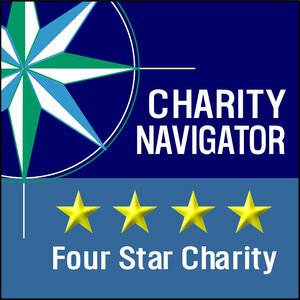Take a look at Artistic Director Meg Glaser’s boots for the very first Cowboy Poetry Gathering! From year one, Meg has been an integral part of the Gathering and the Western Folklife Center. Now, 37 years later, she continues to bring a splash of style to all she does.
In honor of Meg’s well-deserved retirement, we asked Nevada Humanities Executive Director (and longtime friend and colleague) Christina Barr to share some words.
When Western Folklife Center staff asked me to write about Meg Glaser’s retirement after 37 years of service to the Western Folklife Center, the National Cowboy Poetry Gathering, and to the preservation and celebration of the traditional culture of the West, I was both honored to take on the task, but also challenged by how to do justice to one of my most important friendships and collaborations.
I joined the staff of the Western Folklife Center in 2003. I was brought on to help Meg and Founding Director Hal Cannon implement a new multi-year project titled Deep West, which was essentially a leadership and arts participation initiative funded by the Wallace Foundation and designed to invigorate Western Folklife Center programs and engage and expand program audiences. To do these things, Meg and I were charged with dreaming up creative and innovative (and sometimes very out of the box) programs that would extend across the western U.S. We embraced this charge with gusto.
During the six years that we worked together, Meg and I were constantly on the road doing fieldwork and developing programs for Deep West and other initiatives. We undertook fieldwork and programming in every state in the western U.S. I sat down to calculate the number of miles Meg and I drove over our time together, and when Meg parted with her 2003 Subaru Outback in 2009 it had more than 150,000 miles on the odometer. That’s about 25,000 miles a year, which represents a lot of road snacks, conversations, and brainstorms.
Those were joyful moments exploring the West. It’s a gift to be able to be a happy tourist in your own region, meeting the most amazing people along the way and working to understand and share their creativity and their perspectives. In addition to the programs we hosted in communities across the region, many of these explorations were brought back to Elko and shared with audiences at the National Cowboy Poetry Gathering.
My six years working with Meg were but a brief blip in Meg’s larger trajectory. Meg was raised by her parents Arthur and Marianne Glaser on a legacy, centennial cattle ranch in Elko County, Nevada, along with her brothers Alan and Matt and her sister Susan. Meg’s love of music and culture took her far afield for college at the University of Utah (music education) and the University of Washington (ethnomusicology), and for work in Washington, D.C., at the National Endowment for the Arts, the Center for Folklife and Cultural Heritage at the Smithsonian Institution, and at the National Council for Traditional Arts. Ultimately, when she returned to Elko in 1990 to formally become Program Director for the Western Folklife Center and its programs, she had the remarkable opportunity to return to her hometown to undertake her heart’s work near her family and to give back to her community, an opportunity that is very rare for kids from rural places with dreams about becoming ethnomusicologists and folklorists.
Since that time, Meg has become the heart and soul of the Western Folklife Center and its work to preserve and protect the traditional culture of the West. In her 37 years of service, the projects that Meg developed created important documentary records of rural, western life that will be relevant for generations to come. In addition to the National Cowboy Poetry Gathering, which Meg has been a key player in since its inception in 1985, these include programs focused on cattle ranching, sheep ranching, rural life, cowboy gear, youth radio workshops, newcomer experiences, international cultural exchanges, and more.
She has overseen and produced 37 years of special themes and initiatives for the National Cowboy Poetry Gathering, including serving as a coordinator for the very first Gathering in 1985. She has curated and co-curated no less than 45 original exhibitions featuring ranching cultures from all over the world, and installed them at the Western Folklife Center gallery, in community venues, online, and as traveling exhibitions that have been hosted all over the West. This is just a small sampling of her work.
Meg does not seek the limelight, so her presence and influence can sometimes be subtle and not fully seen or understood by all even though we have all felt it. Her contributions to our collective understanding of western culture are deep and wide. Her work has strengthened our understanding of rural life and the critical role of creativity in sustaining and nurturing western ranch-based and agricultural communities. Her vision for the creativity of West has expanded what we consider to be art, finding artistry in all facets of the ranch experience. Her idealism has inspired many conversations inviting divergent voices to come together to find a middle path. Her ability to draw forth and encourage musicians and poets has helped many people foster their own creativity and has inspired the programs of countless community festivals and cowboy poetry gatherings across the nation (and the globe), injecting them with new and diverse voices and perspectives.
Meg also has a deep sense of service and has given her time and expertise generously to organizations ranging from the National Endowment for the Arts, the Nevada Arts Council, Nevada Humanities, and numerous other groups in need of her insight. She is a collaborator par excellence and has mentored dozens of emerging culture workers and fellow co-workers, encouraging them to do their very best work, including me.
I imagine that Meg is feeling the highs and lows of retirement: the delight of free time and fewer responsibilities, but also the uncertainty of new routines and shifting relationships. Meg has always had a long view to the future and preservation of traditional culture of the West. Meg has also cultivated long-standing relationships with the people she has befriended in her work. This is a key part of Meg’s legacy as she hands over the reins to the next generation of folklorists and ethnomusicologists (the Western Folklife Center had to hire two fabulous people to replace one irreplaceable Meg, by the way). Meg has assured me that she is looking forward to collaborating in fresh new ways and that she is excited about the Western Folklife Center and its future. Now she has time to realize all the side project ideas she has amassed over the years.
My many miles with Meg have given me a glimpse into her sense of ethical care and her values. There are so many stories filled with love and humor. Her deep sense of self has had an impact on how I live my life and raise my daughter. Meg taught me that when we amplify the voices and stories of people who are not always heard we are enriching our own stories and experiences beyond measure. To experience the National Cowboy Poetry Gathering – and all of the things that she has done and will do next – is to see this writ large for all.
In a pandemic, the normal celebrations and rituals that we rely on to share our appreciation and love are not in place in the usual way. Especially with the Gathering not happening in person this January – this is when we would have surrounded Meg with love and sent her off in a truly splendorous manner. We can do these things in the future, but the quiet of this immediate moment means that Meg will end her tenure at the Western Folklife Center with a subtler fanfare. Those of us who know Meg well, also know that while it has been her life’s work to focus the spotlight on others, she may find a small relief knowing that she has a brief reprieve from having the glare focused entirely on her. Even so, knowing the value and importance of her work and spirit (and knowing all of you and how much you love a good party), the time will come when we will all be able to gather together to thoroughly embarrass Meg with our appreciation and gratitude. It has been an absolute honor and privilege to collaborate with, and learn from, Meg and I look forward to joining you in that celebrational moment with devious glee.
Christina Barr
Executive Director
Nevada Humanities
Reno, Nevada
Plenty of other people weighed in about Meg as well. Here are a few of their stories, and the three words they would use to describe Meg:
One of the many things I admire about Meg is her ability to listen and hear all sides of an argument. She gathers the ideas pertaining to a problem and, if asked, can brief them as well as anyone without hinting sides. Don't know if I've ever met a more kind, gentle, considerate or capable person. Her heart is as big as a suitcase and her sense of humor is well honed. She is the gathering, a friend and a hero, oh, and a snazzy dresser!
- Waddie Mitchell
One of my favorite Meg memories actually predates Western Folklife Center Daze. Meg was still working for the National Council for the Traditional Arts, and we were all at the National Folk Festival, I believe in Lowell, Massachusetts. It was very warm and humid, and festival staff was housed in dormitories with no active AC. I broke out in hives in the middle of the night from the heat, and Meg, the angel of mercy, took me to the emergency room where I got shot up with, I think, epinephrine. Don't recall if that was the same year we had paper bed sheets.
Three words to describe Meg? Always on time.
- Charlie Seemann
Every gathering: The quiet way she resolves a sudden crisis behind the curtain and how she seems to be everywhere at once!
Observant, loyal, integrity
Integrity, folklife, artistry
- Annie Hatch
One of the big reasons that Meg is so beloved is that she always puts artists first. She always listens to their needs and wants, understands what they are trying to say, and makes sure they and their work are shown to best advantage. Whether it’s displaying their visual art and craftsmanship in the gallery, or making sure they have the best sound and lighting on stage, she does everything she can to help them shine and make their voices heard. She puts the same care and thought into how the WFC is presented as well, with beautifully designed posters, program books full of thought-provoking essays, and a warm, welcoming space in the Pioneer. She’s been there since the start of the Gathering, has shaped its artistic vision in countless ways, and she is one of the very few people who have been at every one.
Meg always takes time to listen, to stop and chat, to ask how you’re doing. There is an ethic of care in everything she does.
- Andrea Graham
In many years' working with Meg, my favorite memories are those moments of her quiet, quick, and humorous observations (sometimes in the form of a suggestion). Always, always "spot on" for accuracy, they caused a brief intake of silence and then resulted in the eruption of delighted laughter for us all...made for fun moments in Allstaff meetings!
- Krys Munzing
[Meg,] It just stuns me. You're too young to retire, but you've earned every bit of it. I want to thank you for welcoming me to the Gathering almost twenty years ago, I think. And it's been terrific every time I've dealt with you. It has been nothing but good, and those were three words I would use to describe you - nothing but good.
- Jim Rooney
Meg Glaser (left) enjoys a moment backstage at a Gathering performance, with (left to right) Dave Stamey, Charlie Seemann, Paul Zarzyski, and Mike Beck.





